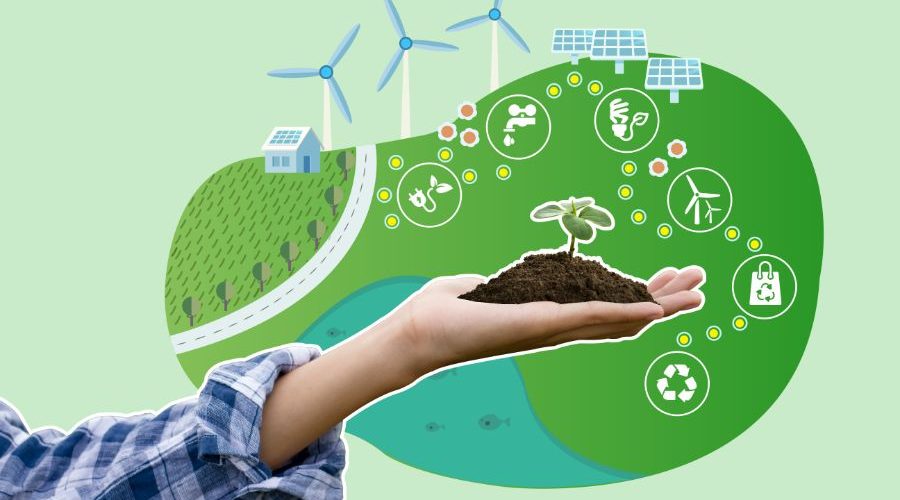Introduction to Renewable Energy
Renewable energy refers to energy derived from natural sources that are replenished at a faster rate than they are consumed. This includes solar, wind, hydroelectric, geothermal, and biomass energy. As the world grapples with the challenges of climate change, resource depletion, and environmental degradation, the shift toward renewable energy has become increasingly vital. According to the International Energy Agency (IEA), renewable energy sources are expected to account for nearly 90% of the increase in global power capacity by 2025, highlighting their growing importance in the global energy landscape.
Historical Context of Renewable Energy
The use of renewable energy is not a new concept. Ancient civilizations harnessed natural resources, such as wind and water, for various purposes. For example, windmills were used for grinding grain, and watermills harnessed the power of flowing water for mechanical tasks.
The modern renewable energy movement gained momentum in the late 20th century, driven by concerns about fossil fuel depletion, air pollution, and climate change. The oil crises of the 1970s prompted many countries to explore alternative energy sources, leading to increased investments in solar and wind technologies.
In recent decades, technological advancements and declining costs have further accelerated the adoption of renewable energy. The 2015 Paris Agreement marked a significant commitment by nations to reduce greenhouse gas emissions and transition to cleaner energy sources, further solidifying the role of renewables in the global energy transition.
Benefits of Renewable Energy
The transition to renewable energy offers numerous benefits that extend beyond environmental concerns:
Environmental Benefits: Renewable energy sources produce little to no greenhouse gas emissions during operation, significantly reducing air and water pollution. According to the U.S. Environmental Protection Agency (EPA), transitioning to renewable energy can help mitigate climate change and improve public health by reducing harmful pollutants.
Energy Independence: By harnessing domestic renewable energy sources, countries can reduce their dependence on imported fossil fuels. This energy independence enhances national security and stabilizes energy prices, protecting economies from fluctuations in global oil markets.
Economic Growth and Job Creation: The renewable energy sector has become a significant driver of economic growth and job creation. According to the International Renewable Energy Agency (IRENA), the renewable energy sector employed over 11 million people worldwide in 2018, with numbers projected to continue rising. Jobs in solar, wind, and energy efficiency are often local, contributing to community development.
Sustainable Development: Renewable energy supports sustainable development by providing affordable and reliable energy access to underserved populations. Off-grid renewable energy solutions, such as solar home systems and microgrids, can empower communities and improve living standards, particularly in rural areas.
Technological Innovation: The renewable energy sector fosters technological innovation and research. Advances in energy storage, grid integration, and smart technologies enhance the efficiency and reliability of renewable energy systems, driving further investment and development.
Key Statistics on Renewable Energy
Understanding the impact of renewable energy requires examining relevant statistics. According to the IEA:
Global renewable electricity generation increased by 7% in 2020, reaching a record high of 29% of total global electricity generation. Solar power capacity alone grew by 22% in 2020, with over 800 gigawatts (GW) installed worldwide. The renewable energy sector is projected to attract investments of $2.6 trillion globally by 2025.
These statistics highlight the rapid growth and potential of renewable energy sources in addressing global energy needs.
Challenges in Transitioning to Renewable Energy
While the benefits of renewable energy are significant, several challenges can hinder the transition:
Intermittency and Reliability: Many renewable energy sources, such as solar and wind, are intermittent and dependent on weather conditions. This variability can pose challenges for grid reliability and energy supply.
Infrastructure and Investment: Transitioning to renewable energy requires significant investments in infrastructure, including power generation, transmission, and distribution systems. Many regions face financial and logistical barriers to developing the necessary infrastructure.
Policy and Regulatory Frameworks: Effective policies and regulatory frameworks are essential for promoting renewable energy adoption. Inconsistent policies, lack of incentives, and regulatory hurdles can impede progress.
Public Awareness and Acceptance: Public understanding of renewable energy technologies and their benefits is crucial for successful implementation. Misinformation and resistance from communities can hinder the acceptance of renewable energy projects.
Resource Availability: The availability of renewable resources can vary by region. Some areas may have abundant solar or wind resources, while others may lack sufficient potential, necessitating regional collaboration and resource sharing.
Successful Renewable Energy Initiatives
Several initiatives have successfully promoted the adoption of renewable energy, yielding positive outcomes:
Feed-in Tariffs and Power Purchase Agreements: Many countries have implemented feed-in tariffs or power purchase agreements (PPAs) to encourage renewable energy development. These policies guarantee fixed payments for renewable energy producers, providing financial certainty and stimulating investment.
Renewable Portfolio Standards: Renewable portfolio standards (RPS) require utilities to obtain a certain percentage of their energy from renewable sources. This regulatory framework has been effective in driving renewable energy adoption in several U.S. states.
Community Solar Projects: Community solar initiatives allow individuals and businesses to invest in shared solar installations, providing access to solar energy for those who may not have suitable rooftops. These projects promote local engagement and expand renewable energy access.
International Renewable Energy Agency (IRENA): IRENA plays a crucial role in promoting renewable energy globally. The agency provides policy advice, technical assistance, and capacity-building support to member countries, facilitating the transition to sustainable energy systems.
Corporate Renewable Energy Purchases: Many corporations are committing to renewable energy by signing long-term power purchase agreements. Companies like Google, Amazon, and Microsoft have made significant investments in renewable energy, driving demand and supporting the growth of the sector.
Strategies for Promoting Renewable Energy
To effectively promote renewable energy adoption, several strategies can be implemented:
Invest in Research and Development: Continued investment in research and development is essential for advancing renewable energy technologies. Governments, private sector actors, and research institutions should collaborate to drive innovation and improve efficiency.
Enhance Grid Infrastructure: Upgrading and modernizing grid infrastructure is crucial for accommodating renewable energy sources. Smart grid technologies can enhance grid reliability and facilitate the integration of distributed energy resources.
Implement Supportive Policies: Governments should implement supportive policies and incentives that promote renewable energy investments. This includes tax credits, grants, and subsidies that encourage the development and deployment of renewable technologies.
Foster Public Engagement: Engaging the public in discussions about renewable energy can enhance understanding and acceptance. Community outreach, educational campaigns, and stakeholder consultations can help build support for renewable energy projects.
Promote Energy Efficiency: Energy efficiency measures complement renewable energy efforts by reducing overall energy demand. Implementing energy efficiency programs can enhance the effectiveness of renewable energy initiatives and contribute to a more sustainable energy future.
The Future of Renewable Energy
The future of renewable energy is likely to be shaped by several trends:
Decentralization of Energy Systems: The transition to renewable energy will increasingly involve decentralized energy systems, with local communities generating and managing their own energy resources. This shift empowers individuals and enhances energy resilience.
Integration of Energy Storage: Advances in energy storage technologies will play a critical role in addressing the intermittency of renewable energy sources. Improved battery technologies and other storage solutions will enhance grid reliability and enable greater integration of renewables.
Electrification of Transportation: The electrification of transportation, including electric vehicles (EVs), will drive demand for renewable energy. As more EVs are adopted, the need for clean electricity sources will increase, further promoting the transition to renewables.
Collaboration and Partnerships: Collaboration among governments, businesses, and communities will be essential for advancing renewable energy goals. Partnerships can facilitate knowledge sharing, resource mobilization, and innovative solutions.
Global Commitment to Climate Goals: The increasing urgency of climate change will drive global commitments to renewable energy. Countries will continue to set ambitious targets for reducing greenhouse gas emissions, with renewable energy at the forefront of their strategies.
Conclusion
The transition to renewable energy is not only essential for addressing climate change but also offers numerous benefits for the environment, economy, and society. By harnessing the power of renewable resources, we can reduce greenhouse gas emissions, enhance energy independence, and drive economic growth. While challenges remain, the opportunities presented by renewable energy are significant. As we move forward, it is crucial to prioritize the development and adoption of renewable energy technologies, ensuring a sustainable and resilient energy future for generations to come.



